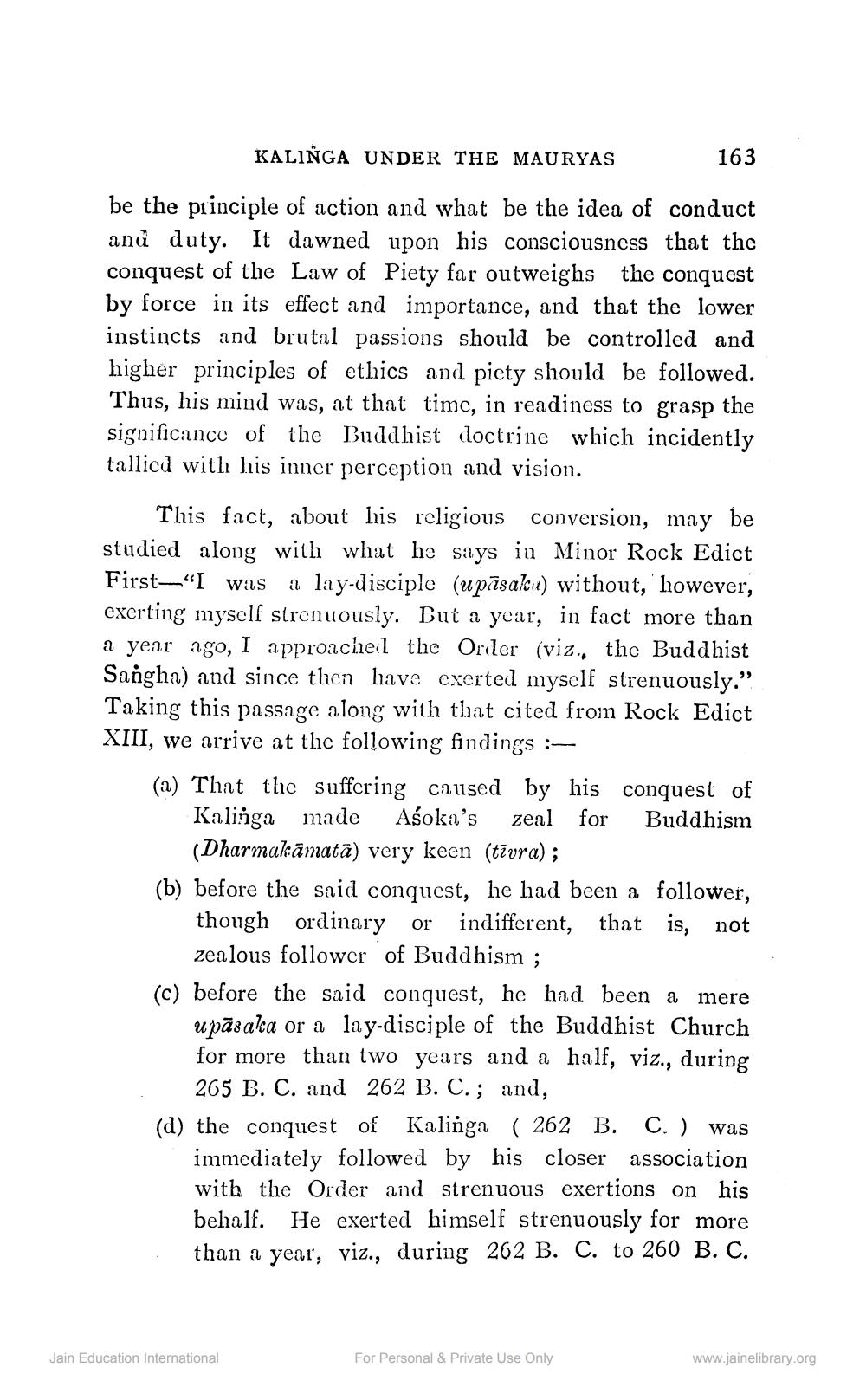________________
KALINGA UNDER THE MAURYAS
163
be the principle of action and what be the idea of conduct and duty. It dawned upon his consciousness that the conquest of the Law of Piety far outweighs the conquest by force in its effect and importance, and that the lower instincts and brutal passions should be controlled and higher principles of ethics and piety should be followed. Thus, his mind was, at that time, in readiness to grasp the significance of the Buddhist doctrine which incidently tallicd with his inner perception and vision.
This fact, about his religious conversion, may be studied along with what he says in Minor Rock Edict First—“I was a lay-disciple (upāsakıt) without, however, exerting myself strenuously. But a year, in fact more than a year ago, I approachel the Oriler (viz., the Buddhist Sangha) and since then have exerted myself strenuously.”. Taking this passage along with that cited from Rock Edict XIII, we arrive at the following findings :(a) That the suffering caused by his conquest of
Kalinga made Asoka's zeal for Buddhism
(Dharmakāmatā) very keen (tīvra); (b) before the said conquest, he had been a follower,
though ordinary or indifferent, that is, not
zealous follower of Buddhism ; (c) before the said conquest, he had been a mere
upāsaka or a lay-disciple of the Buddhist Church for more than two years and a half, viz., during
265 B. C. and 262 B. C.; and, (d) the conquest of Kalinga ( 262 B. C.) was
immediately followed by his closer association with the Order and strenuous exertions on his behalf. He exerted himself strenuously for more than a year, viz., during 262 B. C. to 260 B. C.
Jain Education International
For Personal & Private Use Only
www.jainelibrary.org




